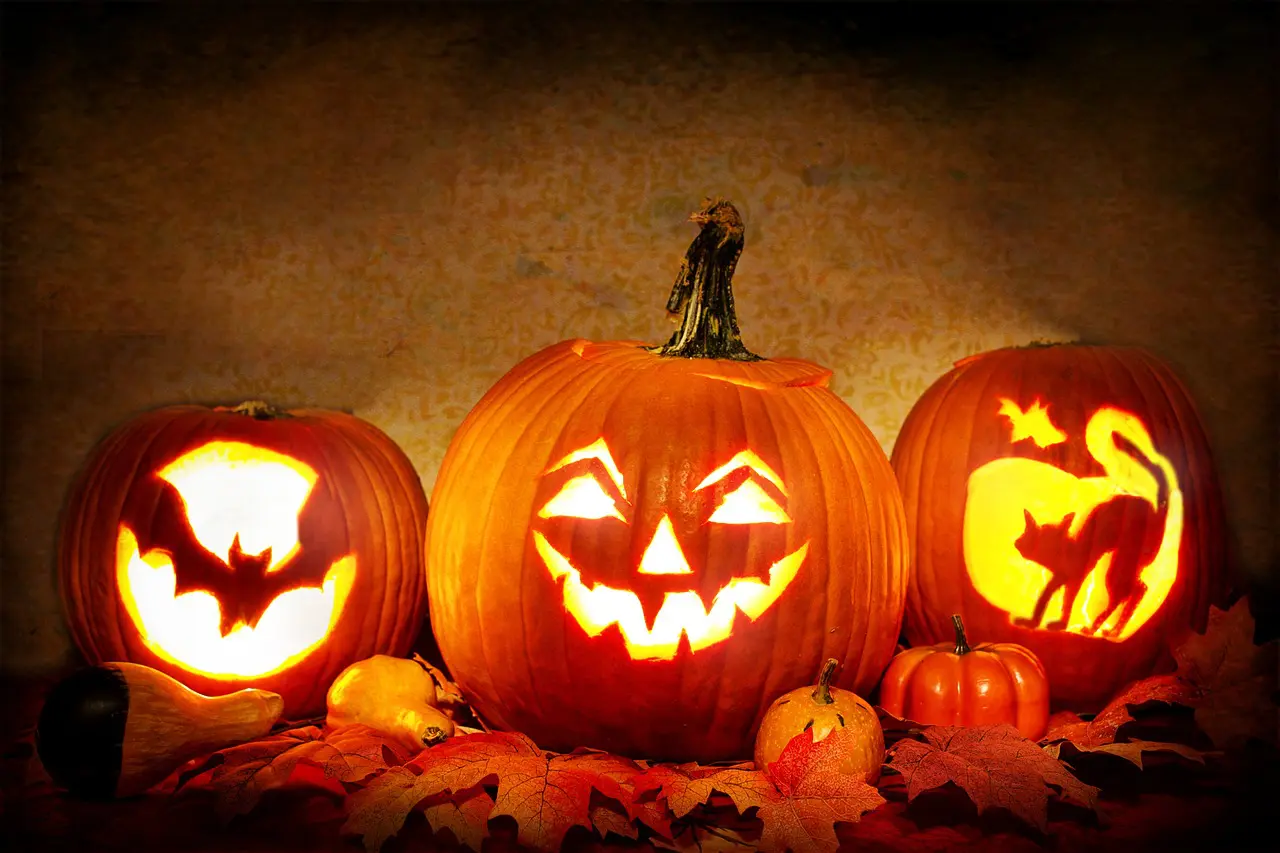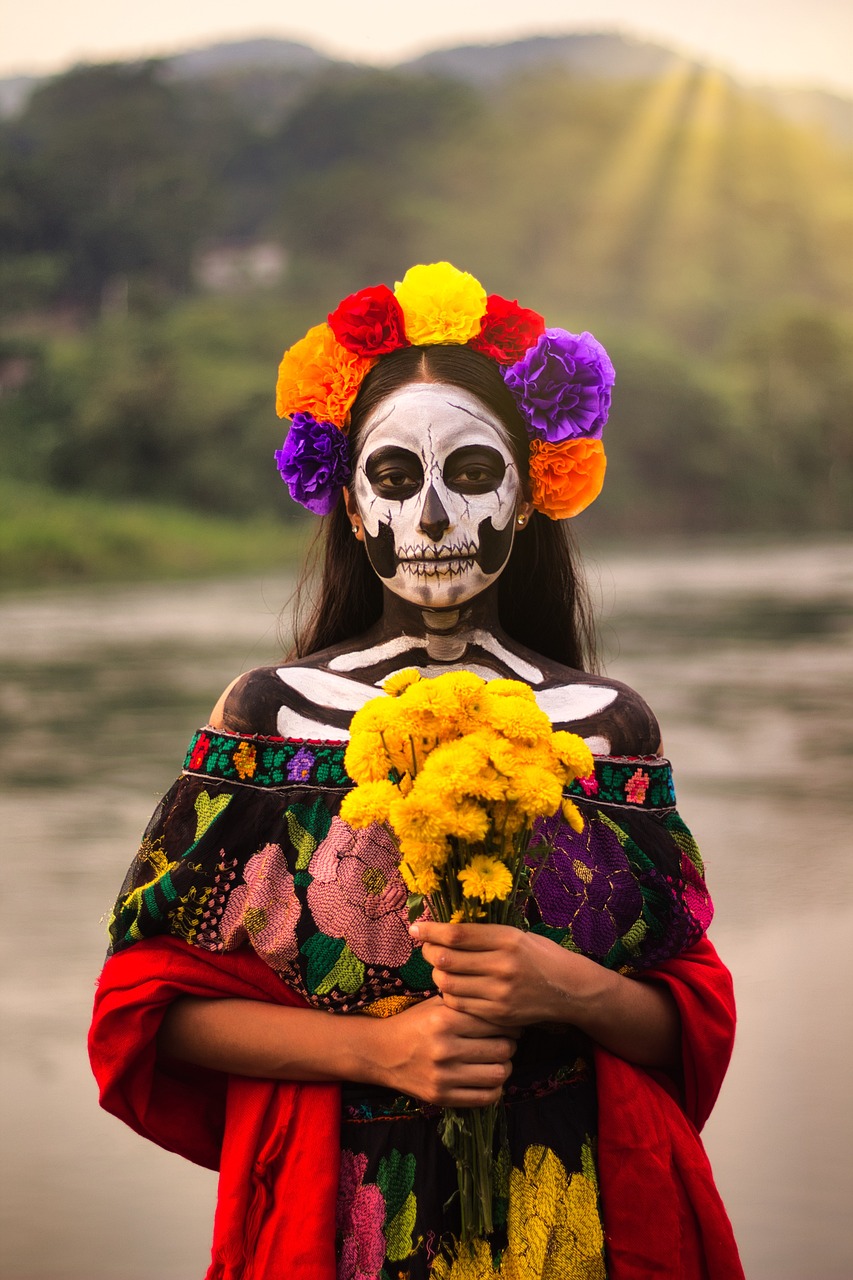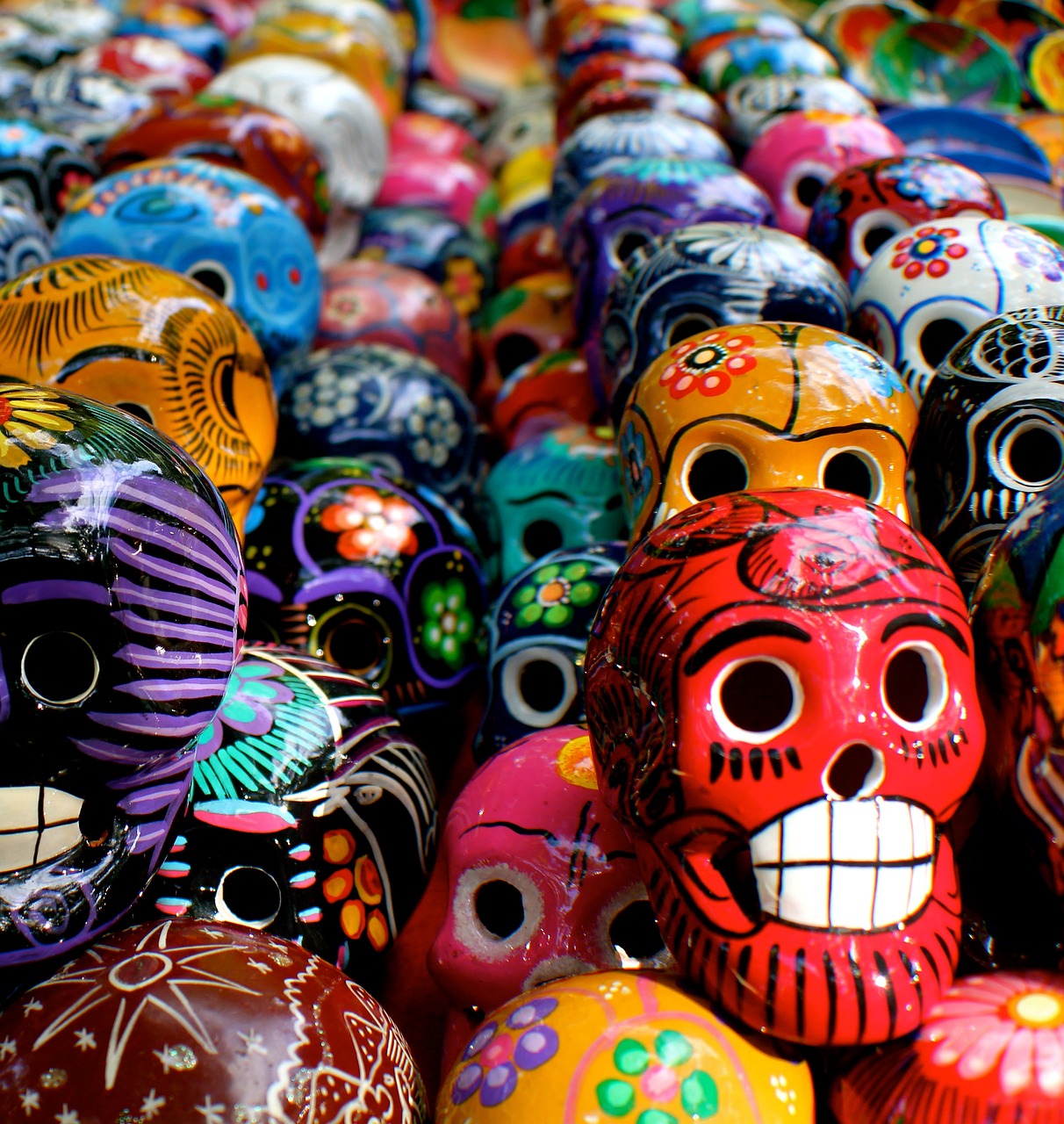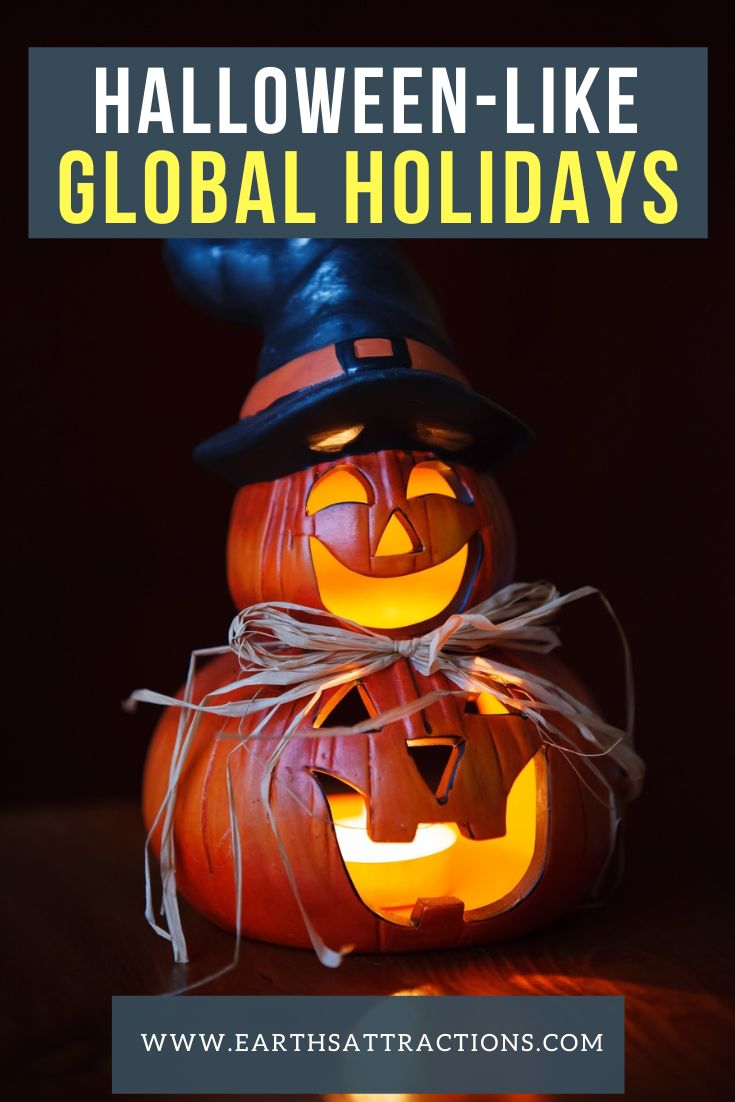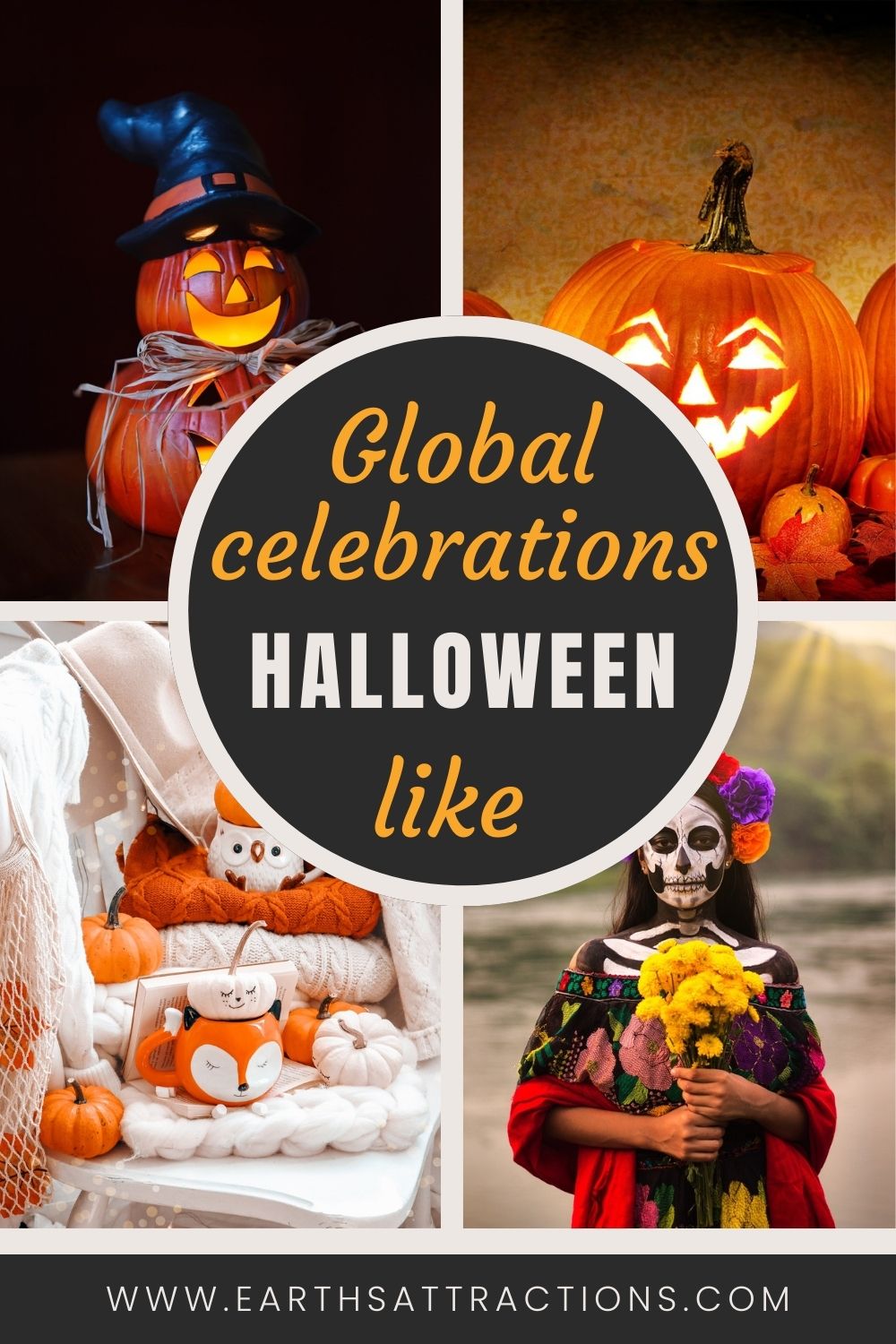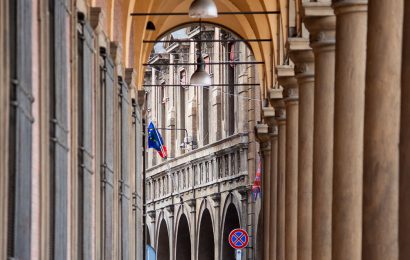Boo 🙂 Halloween is right around the corner, so it’s time for costumes, candy, and spooky celebrations. But did you know that many cultures worldwide have their own versions of Halloween with unique traditions? Let’s look at some of these fascinating holidays similar to Halloween in different countries.
This article covers international Halloween-like celebrations and traditions from around the world! Some of the Halloween-esque holidays across the globe may be familiar to you, but there will definitely be some surprising festivals, traditions, and holidays.
As a note, before diving into similar holidays to Halloween in different countries, I will say, from the beginning, that more and more countries are celebrating Halloween. Some took only the commercial part – trick or treating, costume parties etc. -, but they still have Halloween fairs and events.
This article presents local Halloween-like traditions and events – and you will see (like I did), that there are many parts of the world that honor ancestors, that there are many holidays when people think that the veil between the world of the living and the world of the dead is very thin on one day/night of the year, and that there are many holidays when people disguise themselves through costumes from evil spirits and lit bonfires to keep them at bay.
No Tricks, Just International Treats: Enjoy These Global Festivals Like Halloween
Included on this guide to the Global Festivals Like Halloween are:
- Samhain – Ireland and Scotland
- Sfântul Andrei (Saint Andrew’s Day) – Romania and other countries
- Día de los Muertos – Mexico and Spain
- Obon Festival – Japan
- Hungry Ghost Festival – China, Singapore, and Malaysia
- Toussaint – All Saints Day in France
- Zaduski – All Souls’ Day – Poland
- Pangangaluluwa and “Day of the Dead” (Araw ng mga Patay) – Philippines
- Gai Jatra – Nepal
- Dia de las Brujas – Venezuela
- Pchum Ben – Cambodia
- Pitru Paksha – India
- Conclusion
Samhain – Ireland and Scotland
Let’s kick things off in the Celtic heartlands of Ireland and Scotland. If you’re in the mood for a Halloween celebration with deep historical roots, then Samhain is your ticket.
It falls on October 31st, marking the end of the harvest season and the beginning of the dark half of the year.
You can experience the ancient Celtic traditions of lighting bonfires, carving turnips (the original Jack-o’-lanterns), and dressing in elaborate costumes to ward off evil spirits. In Ireland, Derry hosts the “Banks of the Foyle Halloween Carnival,” a week-long festival featuring parades, fireworks, and haunted houses.
They say that this is “Europe’s Largest Halloween Festival” [1] – so if you are in the area, make sure you do not miss it! 4 nights celebrating Halloween.
Sfântul Andrei (Saint Andrew’s Day) – Romania (and some other Christian Orthodox countries)
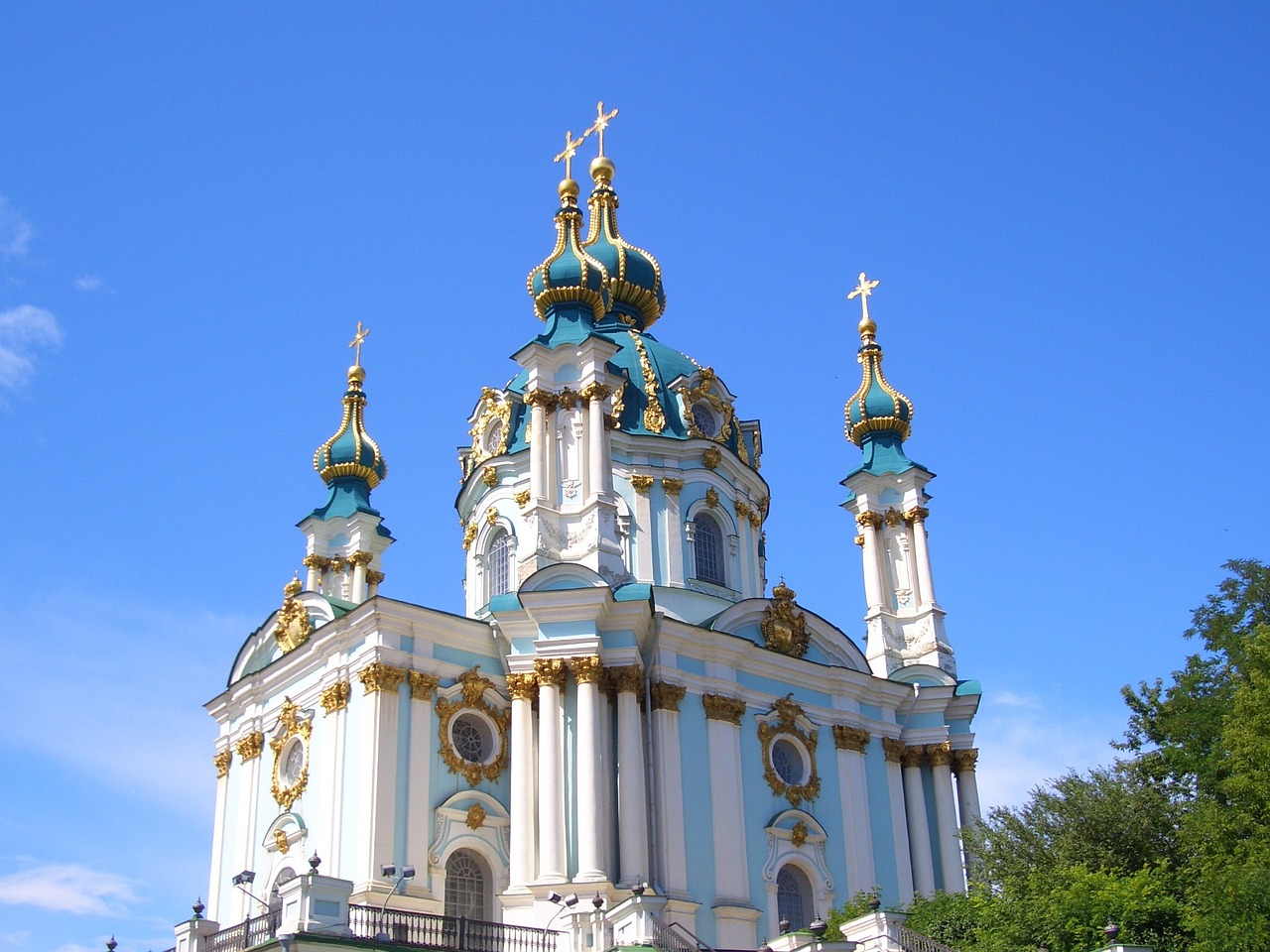
Next on this list of Halloween-like holidays is one from my own country, Romania. Trust me when I say Romanians do not usually associate this with Halloween, but bear with me as I show you how many resemblances exist.
Sfantul Andrei is celebrated on November 30 and has both religious and folk significance. From a religious point of view, Sfantul Andrei is a holiday that commemorates the Apostle Andrew, who is believed to have introduced Christianity to the region. Special church services and processions may be held in honor of the saint (there is a Church in Constanta where it is said that he has been.)
From the other point of view, it is believed that on this night, spirits can come to earth and animals can talk like humans. In order to safeguard houses from evil spirits, there are different traditions – like using garlic on doors.
It is also believed that the future (some of its aspects) can be discovered on this night: unwedded young ladies can see the one they are meant to be with, one can discover if they will have a lucky period, and so on (I won’t go into all the traditions and superstitions).
Día de los Muertos – Mexico and Spain
While Día de los Muertos, or the Day of the Dead, isn’t exactly Halloween, it shares a similar time frame and has a celebratory but spooky vibe that you and I can embrace. The festivities typically take place from October 31st to November 2nd.
This “Day of the Dead” holiday originated with indigenous Aztec rituals honoring the dead. Today, it is a lively celebration to remember passed loved ones through parades, music, food, and decorated altars.
Families create ofrendas (offerings) on gravestones or altars to welcome spirits home. These include the deceased’s favorite foods, drinks, photos, and mementos from their life. Marigold flowers known as cempasúchil are everywhere during Día de Muertos for their bright color and scent believed to attract souls.
The festivities also involve costumes, dancing, and special baked goods like sugar skulls/calaveras and pan de muerto bread. If you happen to be in Mexico during this time, places like Mixquicnear Mexico City hold massive Día de Muertos celebrations with cultural experiences for visitors. Don’t miss a chance to honor the dead among wild revelry and remembrance! [2]
Obon Festival – Japan
In Japan, the festival of Bon or Obon in mid-August pays homage to ancestral spirits. This Buddhist custom has evolved into a family reunion celebrating the souls of those who have passed. People return to their hometowns, clean family graves, and prepare food offerings at altars to invite their ancestors’ presence.
One of Bon’s most famous traditions is the Toro Nagashi ceremony, where lanterns are floated down rivers to guide spirits back to the afterlife. Folks also do Bon Odori dances, wearing yukata robes and masks at local temples.
The streets are filled with vendors selling festival snacks like candied apples, cotton candy, and rice cakes.
During this reflective yet festive season, I recommend joining in on the communal dancing and floating lanterns under the moonlight. It’s a moving experience honoring those we love but see no longer. [3]
Hungry Ghost Festival – China, Singapore and Malaysia
Another holiday honoring the dead is the one held in China. As the previous mentioned Japanese holiday, this too is celebrated in the summer (August).
So, if you find yourself in China around the 15th day of the seventh lunar month (usually in August), you can partake in the Hungry Ghost Festival. This spooky holiday is all about appeasing restless spirits.
Special traditions are kept to our days – the food needs to be cooked three times that day, and in the evening there are photos set on a table and incense burning. Food is put on plates – and offered to the spirits.
The holiday is observed in other parts as well, including Singapore and Malaysia. [4]
Toussaint – All Saints Day in France
The dead are celebrated in France too. And it is around Halloween. French people commemorate the dead in Autumn on the 1st of November. The date is a public holiday.
People go to the cemeteries, put flowers on the graves, and lit candles. [5]
Zaduski – All Souls’ Day – Poland
If you’re in Poland on November 1st, you can engage in the unique blend of Halloween-like traditions and the deep cultural significance of All Saints’ Day.
Join the locals in visiting cemeteries adorned with candles and exquisite flower arrangements. It’s believed that the veil between the living and the dead is thinnest on this day, allowing for a bit of supernatural interaction. [6]
Pangangaluluwa and “Day of the Dead” (Araw ng mga Patay) – Philippines
The Philippines has two consecutive holidays that are perfect for this list of international Halloween-like celebrations.
Pangangaluluwa is a tradition where people visit houses at night to sing songs and get gifts (especially in rural areas.) It is celebrated on October 31st, the day before the “Day of the Dead” (Araw ng mga Patay), also known as All Saints’ Day. [7]
Gai Jatra – Nepal
Gai Jatra, often called the “Cow Festival,” is celebrated in Nepal, particularly in the Kathmandu Valley, in August or September. The festival commemorates recently passed loved ones and helps families come to terms with their loss.
During the celebration, you and I can witness colorful processions featuring people dressed up in various costumes, and even cows adorned with decorations. This is not a recent celebration, as it’s roots go way back to the 17th century. [8]
Dia de las Brujas – Venezuela
Dia de las Brujas, or Day of the Witches, is a Venezuelan tradition celebrated on November 1st, which coincides with All Saints’ Day. This day honors deceased loved ones and, interestingly, witches.
Families gather in cemeteries, cleaning and decorating graves, and sometimes setting a place at the table for spirits. [9]
Children go from house to house asking for sweets – sounds familiar? 🙂
Pchum Ben – Cambodia
In Cambodia, the 15-day Pchum Ben festival happens in September/October as a time to pay respects to the dead. Pchum Ben translates to “gathering together” in Khmer, emphasizing the collective ritual.
For many Cambodian Buddhists, it is crucial to honor ancestors during Pchum Ben so their spirits may be at peace. Monks chant prayers as people leave offerings of food, flowers, and money at temples for the ghosts of the deceased. The key event is the Dak Ben ceremony, where crowds release floating lanterns on waterways and throw rice as “ghost food” to appease any angry or hungry spirits.
Villagers also prepare elaborate feasts to share merit with the souls of seven generations of ancestors. If you visit Cambodia in the fall, absorbing the solemn atmosphere at temples and making an offering yourself lets you witness this unique ancestral tradition. Just remind restless ghosts to pass on peacefully after their brief time among family once more! [10]
Pitru Paksha – India
India’s Pitru Paksha takes place for 16 days in September/October as a way to pay homage to ancestors. In Hinduism and other Indian religions, Pitru Paksha is when the gates of heaven open for ghosts. Souls can then enter the world of the living.
Families leave offerings of food and sprinkle water to satisfy and bless spirits. One custom is to place kheer (sweet rice pudding) on roofs to appease ghosts as crows eat it. Shraadh rituals involve making food offerings, chanting mantras, and donating items in ancestors’ names. Some areas even host huge feasts where priests and the poor eat meals dedicated to the dead. [11]
Conclusion
In conclusion, as we’ve journeyed through the diverse and enchanting world of Halloween-like celebrations, it becomes clear that the spirit of spookiness and the reverence for the supernatural are not confined to a single holiday or a specific region.
If you set aside the commercial part, you easily notice that people from all over the world (different cultures, and continents) honor the dead and consider that there is a period of time when the veil between the world of the living and the world of the dead is at his thinnest.
Different (and rather similar) traditions try to cast away evil spirits while also letting the beloved ones be remembered and honored (again, through similar traditions such as going to the cemetery, decorating the graves, food offerings, etc.)
Across the globe, people come together to honor their ancestors, celebrate the changing seasons, and explore the mysterious and the unknown.
While the specifics of these celebrations may differ, there is a common thread that unites them all – the desire to connect with the past, embrace the mysteries of life and death, and foster a sense of community and togetherness.
So, the next time you find yourself in a new place in the world, don’t hesitate to join in the festivities, light a candle, wear a costume, and let yourself be enchanted by the global Halloween-like celebrations.
Happy travels, and may your journeys be filled with delightful spookiness and cultural richness!
Information sources:
[1] https://derryhalloween.com/
[2] https://www.history.com/topics/halloween/day-of-the-dead
[3] https://www.japan-guide.com/e/e2286.html
[4] https://www.chinahighlights.com/festivals/hungry-ghost-festival.htm and https://www.visitsingapore.com/festivals-events-singapore/cultural-festivals/hungry-ghost-festival/ and https://mypenang.gov.my/culture-heritage/my-stories/46/?lg=en
[5] https://www.accentfrancais.com/blog/al-saints-day
[6] https://culture.pl/en/article/all-souls-day-the-tradition-of-zaduszki-in-poland
[7] https://en.wikipedia.org/wiki/Pangangaluluwa
[8] https://en.wikipedia.org/wiki/Gai_Jatra
[9] https://www.wradio.com.co/2023/10/27/origenes-de-halloween-la-historia-detras-del-dia-de-las-brujas/
[10] https://www.tourismcambodia.com/tripplanner/events-in-cambodia/pchum-ben.htm
[11] https://timesofindia.indiatimes.com/religion/rituals-puja/pitru-paksha-2023-dates-rituals-and-significance-of-shraddh-paksha/articleshow/103924694.cms

